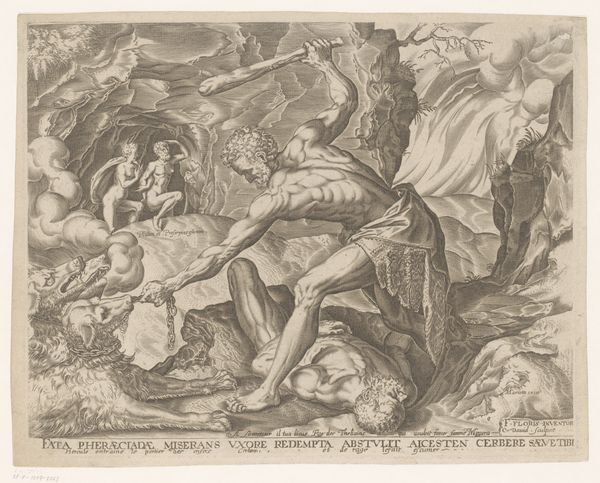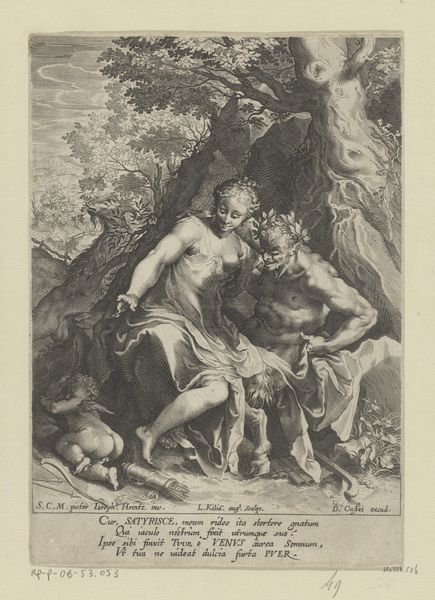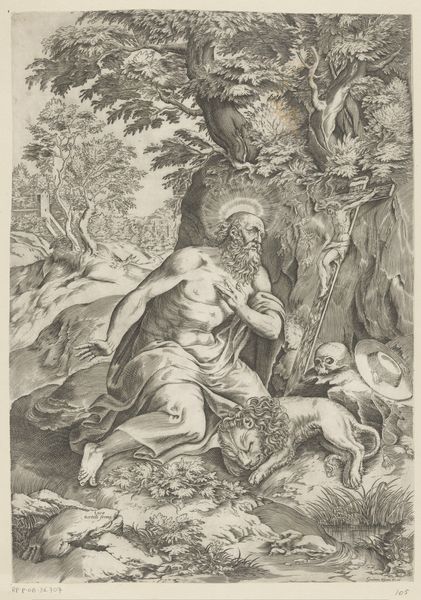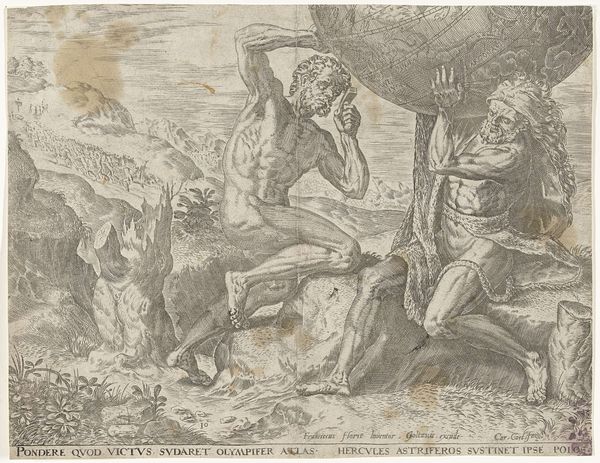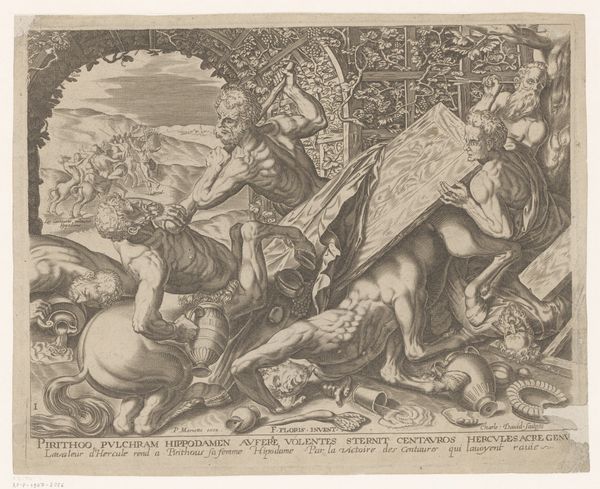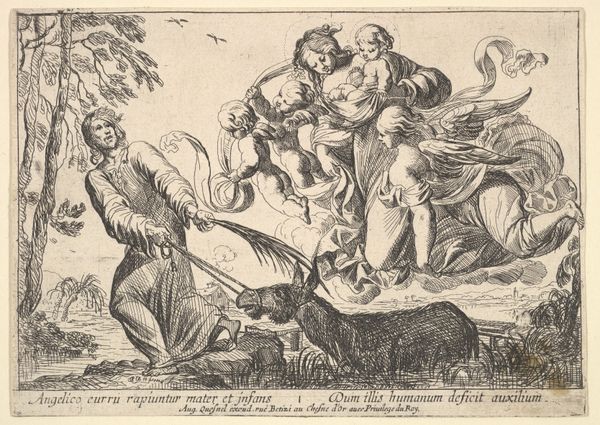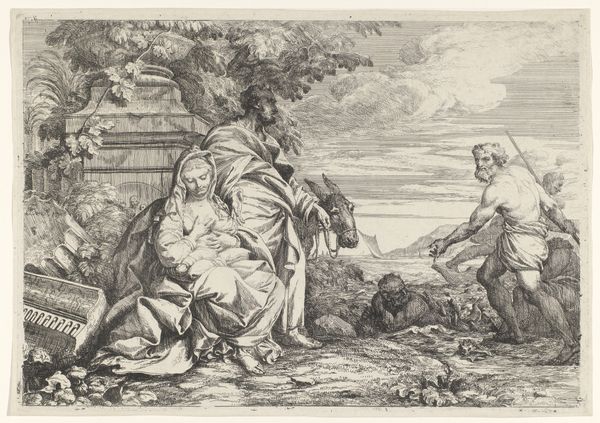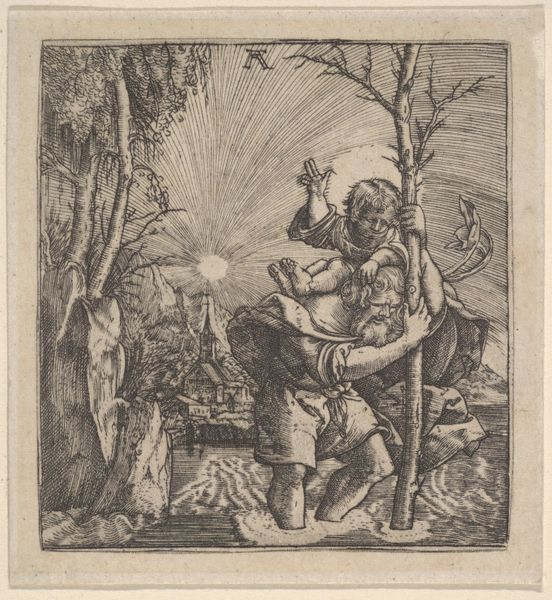
print, engraving
#
baroque
# print
#
landscape
#
figuration
#
history-painting
#
engraving
#
realism
Dimensions: height 228 mm, width 292 mm
Copyright: Rijks Museum: Open Domain
Editor: Here we have "Hercules wrestling with Antaeus," an engraving by Charles David, dating from 1613 to 1638, housed at the Rijksmuseum. My first impression is how dramatically the artist used line work to create such intensity. What do you see in this piece? Curator: This image pulsates with the enduring power of myth. Notice how Hercules, adorned with the lion’s skin, lifts Antaeus away from the earth. What does the Earth itself signify here? Editor: Well, the text at the bottom seems to talk about Antaeus needing the earth. Is that the source of his power? Curator: Precisely. Antaeus, son of Gaia, the Earth goddess, gains strength from contact with the ground. Hercules' act is not merely a physical feat; it’s a severance from his vital source. Do you observe how the landscape contributes to the narrative's symbolism? Editor: The mountains in the background and even the placement of the tree on the right, they add a sense of timeless struggle, almost as if nature itself is a witness. Curator: Consider further: The seemingly defeated figure at the bottom… That's likely Gaia. Reflect on what it might convey when the embodiment of Earth herself appears helpless. It changes the message somewhat doesn’t it? Editor: It definitely does. The helplessness adds another layer to Hercules’ victory. He's not just defeating a man, he’s overcoming a primal force, defying a kind of natural law. I never considered how deep the symbolism went. Curator: The enduring appeal of this image comes from that multifaceted representation of strength, dependence, and our complex relationship with the natural world. There’s a dialogue occurring here that still resonates centuries later. Editor: That’s incredible to think about; an image acting like a container for memory.
Comments
No comments
Be the first to comment and join the conversation on the ultimate creative platform.
